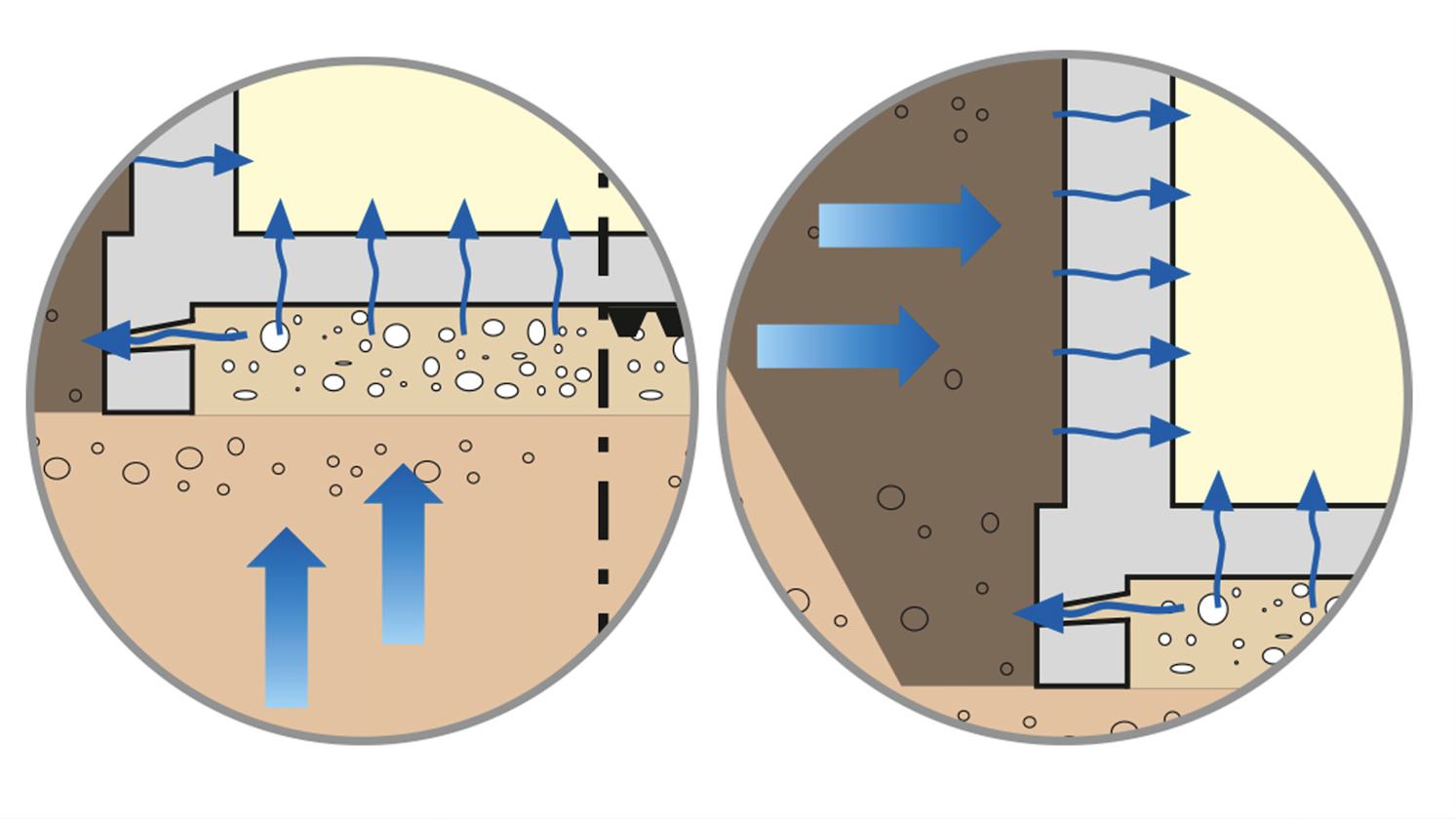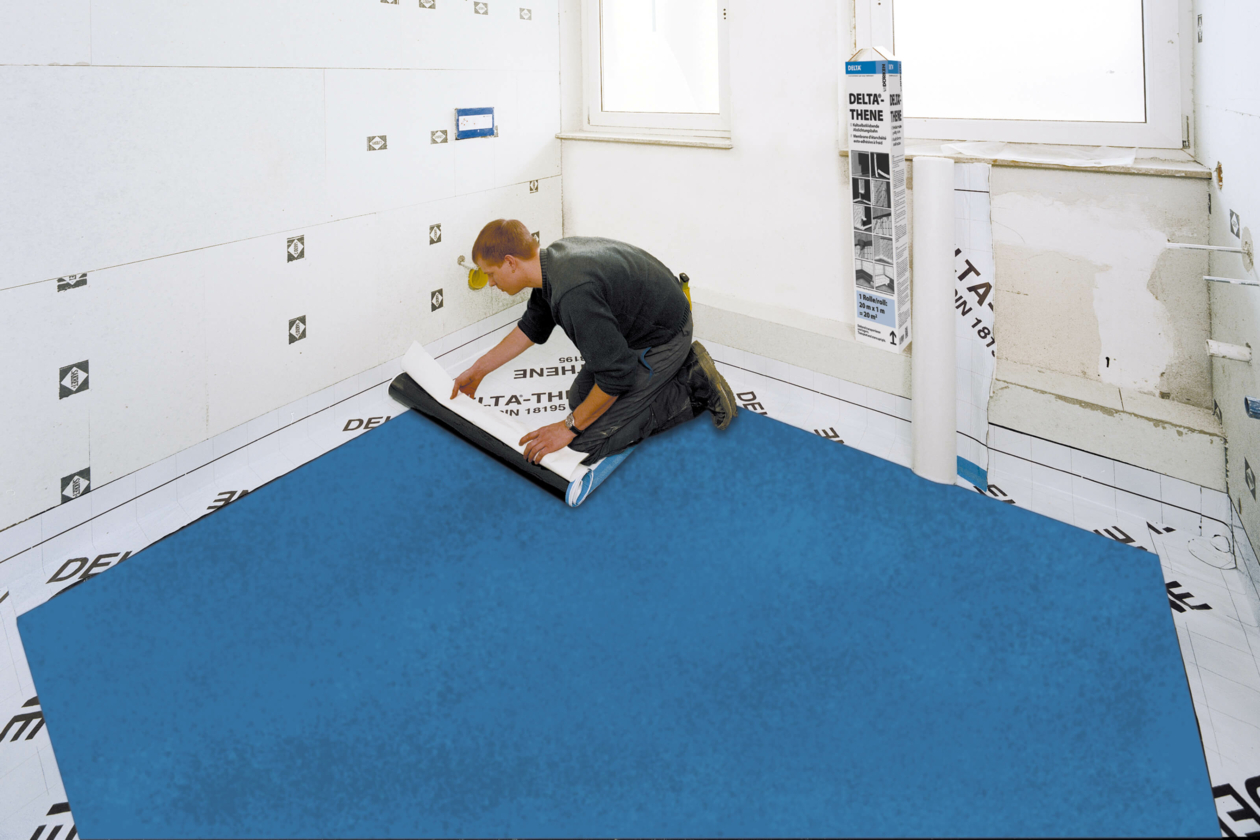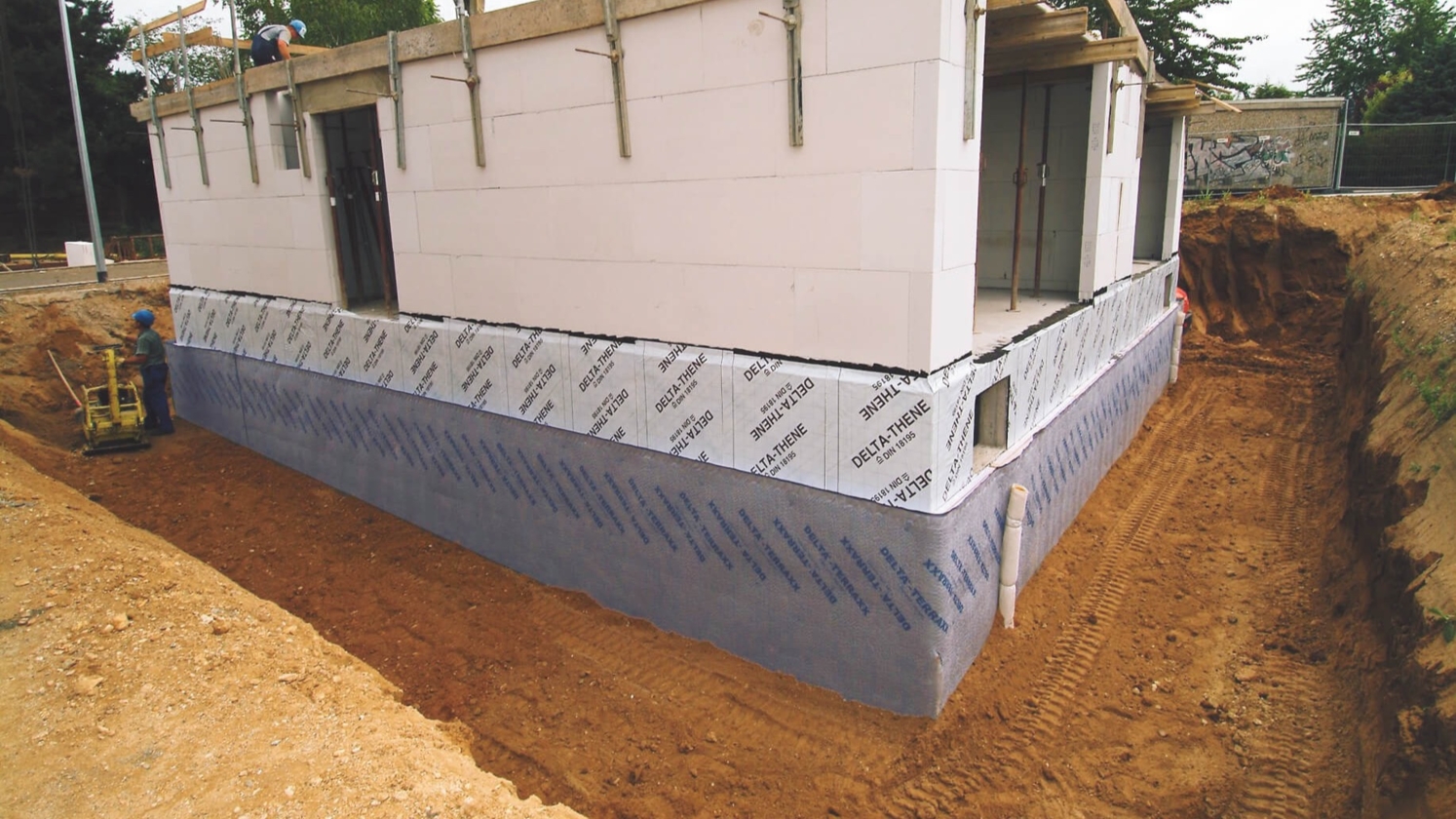In the subsoil, soil moisture is to be expected at any time. By means of capillary forces, the water can also be transported against gravity (suction, adhesive, and capillary water). In order to prevent rising damp inside the masonry, cross-sectional seals (masonry barriers) are used when the water is not pressing. For a comparable reason, the base plates are sealed against capillary moisture. For the sealing inside and under the walls, various DELTA® sub-base course with different material characteristics are available.
The cold, self-adhesive bitumen membrane DELTA®-THENE THENE is ideal for the sealing of the floor slab. Due to its high adhesive strength, it can be processed without an open flame. The system is supplemented by the solvent-free primer DELTA®-THENE GRUND INSIDE which has been specially developed for indoor use.
 Belgium nederlands
Belgium nederlands Belgium français
Belgium français Canada english
Canada english Canada français
Canada français China chinese
China chinese Czech Republic čeština
Czech Republic čeština Deutschland deutsch
Deutschland deutsch France français
France français Hungary magyar
Hungary magyar International english
International english Italy italiano
Italy italiano Netherlands nederlands
Netherlands nederlands Poland polski
Poland polski Russia русский
Russia русский Slovakia slovenčina
Slovakia slovenčina Switzerland français
Switzerland français Switzerland deutsch
Switzerland deutsch Turkey Türkçe
Turkey Türkçe USA english
USA english


